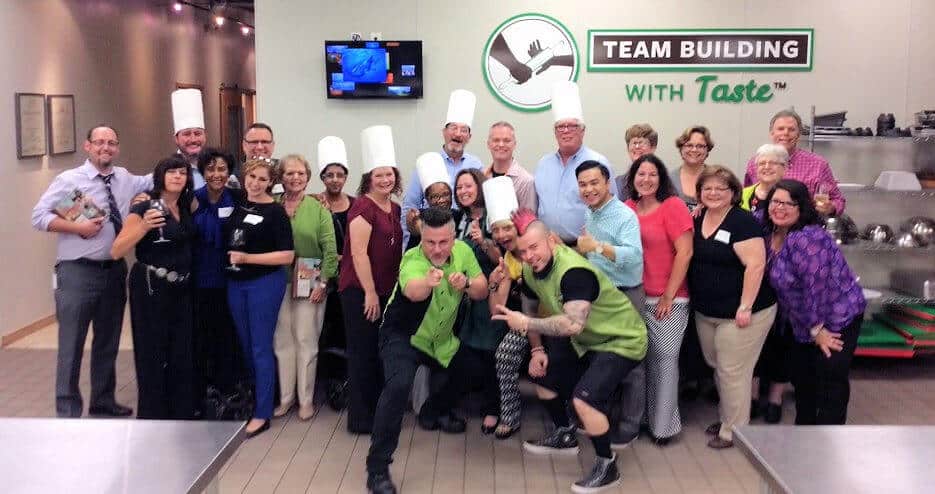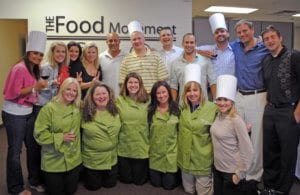Why Virtual Team Building is Critical for Remote Teams

Share this:
Virtual team building is a critical way for remote teams to bond in today’s workplaces that are often no longer centered in an office. These days, virtual teams and remote working have become all the rage. Nearly half, or 46 percent, of organizations polled use virtual teams, according to the Society for Human Resource Management (SHRM). Currently there are nearly 3 million virtual workers in the U. S. And that number is growing every year. The rise of new issues with virtual teams has made team building a useful tool for managers of remote teams.
It’s easy to see why this flexible work option has been gaining popularity. Having a virtual work space can help attract top talent who can work from anywhere including their homes, reducing office expenses, and actually increasing productivity.
Many Fortune 1000 companies around the globe are entirely revamping their spaces around the fact that employees are increasingly mobile. Telecommunications technology, mobile apps, and collaboration tools are readily abundant in the marketplace.
But are these corporate leaders doing enough on the human interaction side? It’s one thing to install VPN service and set up virtual workplace tools. It’s quite another to get distributed teams who sometimes have never met, to work together seamlessly.
Virtual Teams Can Feel Isolated
A recent report by RW3, LLC, a cultural training service, found that 46 percent of employees who work on virtual teams said they had never met their virtual team members and 30 percent said they only met them once a year.
Ninety percent of virtual team members said they don’t have enough time during virtual meetings to build relationships. Eighty-five percent said there is an “absence of collegiality” among virtual team members.
Remote employees typically work within their own silos, and rarely interact informally with their peers and managers like they would in a regular office.
Symptoms of Issues with Virtual Teams
While trust can be easier to build with workers in the same office, leading to greater productivity, virtual teams face barriers to building trust. Virtual team workers relied mostly on task-based trust, which is the belief that your team mates perform competently. Task-based trust develops over time as you see coworkers take responsibility for good quality work delivered on time.
Deeper trust develops from interpersonal interaction that results from informal conversations that help us know and understand our coworkers. For remote workers who only converse briefly in phone meetings or via email, it can take much longer to build personal trust. This lack of personal trust can hinder the open communication that is needed for the most successful and productive teams.
Warning Signs for Virtual Teams and Remote Workers
These warning signs can help you see when your virtual team is suffering from a lack of trust:
- Team workers fail to share information
- Team members don’t trust other team workers to deliver on deadlines
- Conflicts are not being resolved or the same issues keep recurring
- Team members are openly critical or negative
- Low productivity levels or missed deadlines
For virtual workers there is no “water cooler” effect, where team members bump into each other at the water cooler and talk about their lives and what they are working on. Although such minor interactions can be trivial, they have a positive effect on overall team morale, esprit de corps and productivity. Conversely, “isolated” virtual employees who miss out on lunches, social outings and other interactions are less likely to contribute ideas and suggestions to the team, which hinders innovation and effectiveness.
Building Trust for Virtual Teams and Remote Workers
 Informal conversations, outside of a formal meeting, are where each worker can get the information that they need, and even work out how they will achieve the tasks that they are responsible for delivering. The most productive teams accomplish the majority of their work through informal and frequent communications.
Informal conversations, outside of a formal meeting, are where each worker can get the information that they need, and even work out how they will achieve the tasks that they are responsible for delivering. The most productive teams accomplish the majority of their work through informal and frequent communications.
So, what can managers do to build the needed trust and communications in their virtual team?
-
- Meet face-to-face early on in the life of the team
- Encourage the informal conversations that help team members to know and understand each other
- Use tools such as video-conferencing, instant messaging or a team forum with worker biographies and pictures, so that team members will understand each other’s backgrounds and experience
- Give team members the discretion to make decisions and control how they will deliver their work products
- Encourage or delegate team members to partner with each other for tasks where their combined skills will help them to overcome barriers
Where possible, bringing the entire virtual team together in the same location can yield great benefits in teams of communication and productivity. This can take the form of team training or a team building activity.
Virtual Team Activities Build Relationships that Foster Trust
 According to the Harvard Business Review, it gets down to the basics of human relationships: “Get the team together physically early-on. It may seem paradoxical to say in a post on virtual teams, but face-to-face communication is still better than virtual when it comes to building relationships and fostering trust, an essential foundation for effective team work.”
According to the Harvard Business Review, it gets down to the basics of human relationships: “Get the team together physically early-on. It may seem paradoxical to say in a post on virtual teams, but face-to-face communication is still better than virtual when it comes to building relationships and fostering trust, an essential foundation for effective team work.”
One way to do so is with collaborative team building activities. Cliché type events, such as building go-karts or falling back into each other’s arms, often get a roll of the eyes. But corporate cooking events are good for widely dispersed teams because people associate food and kitchens with warmth and companionship. For international groups, there is nothing better than breaking bread together while working as a team to overcome some unique challenges. A corporate cooking event brings team members together through shared learning, and then lets them relax, interact informally, and enjoy the meal they created.
Working together in unfamiliar territory has a way of creating bonds that cannot be created in any other way. It transcends cultural and physical barriers, requires the use of different skills, and allows teams to participate without typical corporate hierarchies
As one Team Building with Taste Atlanta client said after the event:
“No one could decide on the MVP because all roles in the kitchen were very important and everyone was actively participating in order to make the time. This is exactly what I was looking for them to understand!”
Crying together while dicing onions will have that effect on people. That’s an experience that’s impossible to replicate virtually.
How Team Building Helps Trust and Collaboration in Virtual Teams: References
3 Ways Your Remote Team Might Get Cabin Fever — and How to Combat It
Even if they’re productive workers, it’s easy for remote employees to feel out of touch with what’s happening at the home office. As a manager, you can counter that isolation by building strong personal ties with your employees.
Remote workers can develop that sense of community too, but it takes more effort on the part of the employer. It’s a good idea to foster team building since isolated employees may not know where to turn for advice on handling workplace challenges.
Want to Learn More?
Learn more about our Culinary Team Building programs in Atlanta.

